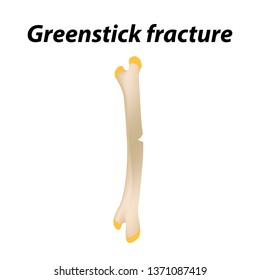Just When You Assume Relief Is Near, Soft Tissue Therapy Exposes Its Unpleasant Truths-- Discover Why The Procedure Can Be Agonizing Yet Helpful
Just When You Assume Relief Is Near, Soft Tissue Therapy Exposes Its Unpleasant Truths-- Discover Why The Procedure Can Be Agonizing Yet Helpful
Blog Article
Post Developed By-Waddell Yildiz
When you undergo soft Tissue treatment, you might find it remarkably uncomfortable. This discomfort emerges as pressure is applied to stressful muscle mass and damaged tissues, triggering your pain receptors. While it can feel traumatic in the moment, there's a reason behind this experience. Understanding what occurs in your body during these therapies can assist you value the process. So, just what is going on beneath the surface area?
The Physiology of Pain During Soft Tissue Treatment
When you undertake soft Tissue treatment, your body's feedback to discomfort is a complicated interplay of physiological processes. As the specialist applies stress, your body triggers pain receptors, sending signals to your mind. https://www.emissourian.com/local_news/mehringer-chiropractic-becomes-washington-care-clinic-offers-regenerative-medicine/article_eb32219e-4a18-11eb-a064-93a75416622d.html sets off the release of natural chemicals, such as substance P and glutamate, which magnify the experience of pain.
Your muscular tissues may also tighten in response, additional complicating the experience. On top of that, your body may launch endorphins, natural pain relievers that can assist reduce some pain.
The interaction between these processes can produce a special experience for each and every individual. Understanding this physical response assists you navigate the feelings during therapy, enabling you to appreciate the balance in between pain and the possibility for healing advantages.
The Role of Discomfort in the Recovery Process
Although pain during soft Tissue therapy can really feel frustrating, it plays a vital duty in the recovery process. When you experience discomfort, your body is signaling that it's functioning to repair damaged cells. This response helps enhance blood circulation to the affected location, supplying crucial nutrients and oxygen required for recovery.
Additionally, discomfort can advertise the launch of endorphins, your body's all-natural medicines, developing a sense of relief post-treatment. Embracing this discomfort can aid you recognize your body's limitations and urge you to attend to underlying problems.
While it's uneasy now, this procedure is important for long-term recuperation and improved feature. Recognizing pain as an important part of healing can encourage you to remain dedicated to your treatment.
Tips for Managing Pain During and After Therapy
Managing pain throughout and after soft Tissue therapy can dramatically improve your general experience and recovery.
To start, communicate openly with your specialist concerning your discomfort levels; they can readjust strategies accordingly. Utilizing deep breathing strategies can also aid you kick back and reduce pain.
Consider applying ice to the cured location post-session to reduce inflammation and numb discomfort. Staying hydrated help in the healing process, so consume lots of water.
Mild stretching and light activity after therapy can promote blood circulation and convenience stiffness. Last but not least, ensure you obtain ample rest to permit your body to heal.
Implementing https://chiropractorsdoctorsnearm94950.nizarblog.com/33223444/discover-exactly-how-soft-tissue-therapy-can-raise-your-sports-performance-and-enhance-recuperation-find-out-the-secrets-to-opening-your-full-capacity can make your soft Tissue treatment extra manageable and satisfying.
Verdict
To conclude, while soft Tissue therapy can be uneasy, it's crucial to acknowledge that this pain plays an important role in your recovery journey. By recognizing the physical reactions at play, you can come close to the treatment with a more positive state of mind. Keep in mind, the preliminary discomfort often paves the way to alleviation as your body releases endorphins. Welcome the procedure, and don't hesitate to make use of the tips for managing discomfort to improve your experience and recovery.
